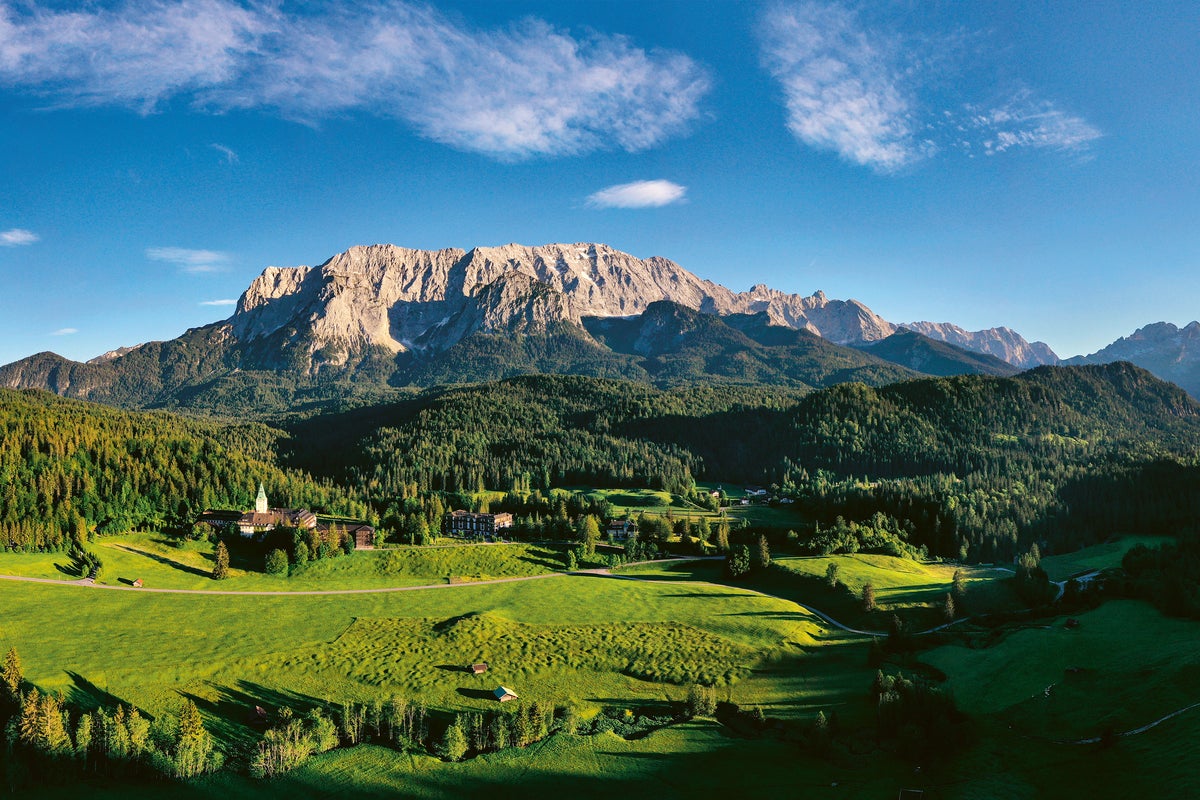These Mesmerizing Zen Garden Videos Offer a Calming Antidote to Your Doomscrolling
Self-taught video artist Yuki Kawae hopes that his designs provide relief and inspire unity amidst troubled times and cluttered feeds. The post These Mesmerizing Zen Garden Videos Offer a Calming Antidote to Your Doomscrolling appeared first on Tricycle: The...

Trike Daily ArtArts & Culture
Self-taught video artist Yuki Kawae hopes that his designs provide relief and inspire unity amidst troubled times and cluttered feeds.
By Alison SpiegelMar 25, 2022 A Zen garden design by artist Yuki Kawae | Photo courtesy Yuki Kawae
A Zen garden design by artist Yuki Kawae | Photo courtesy Yuki KawaeFor a video to inspire a pause in the doomscroll, it has to be pretty powerful—eye-catching at a minimum and unique enough to convince the inundated viewer that among the millions of videos available on any given platform, this one is not to be missed. Yuki Kawae, a designer with no formal filming or video editing experience, and an aversion to social media at that, has cracked the code with his beautiful Zen garden videos. Just ask his 459,000 Instagram followers and 48,000 YouTube followers. After sharing his first video in November 2019, Kawae has amassed an impressive and mesmerizing library of meditative videos that have been as helpful for his own wellbeing as he hopes they are for other people. Tricycle caught up with the self-taught video artist to learn more about the inspiration behind his Zen gardens and the process behind them.
When did you start building Zen gardens? And why? In the fall of 2019, even before the pandemic, the notion of “you should be doing this” or “you should have this” was getting too overwhelming. I felt that the world was getting more noisy with social media, who went where, who has what, and what one “must” do to “succeed.” In today’s world, the idea of what ideal success looks like is inserted into our daily lives whether we like it or not. I was overthinking everything and my mind was clouded with thoughts because many of the expectations—like buying a home—were hard to achieve.
In the midst of all this, I realized that when I was watering or pruning our house plants, my mind was clear and I had no other thoughts but to take care of the plants. That’s when I started dreaming of having a Zen garden. A house plant is just an object in a room, yet it can bring such calmness. I thought that being immersed in a garden would be a quite a different experience.
 Photo courtesy the artist
Photo courtesy the artistAlthough I would have loved to make a garden, housing prices in the San Francisco Bay Area are quite crazy. We don’t have a home or a yard yet. I don’t like to wait so I made a small coffee table-sized Zen garden. That was the starting point of everything.
It was a blessing in disguise to lack something I desired because I was able to find something else that was as rewarding—perhaps even more so. I quickly understood that focusing on the movement made my mind clear. If I am thinking about other things, I mess up the pattern. And it is not so much the end product that is important; it is the process that led me to experience the clear mindedness.
Sand patterns are temporary, just like many things in life. Also, having a purpose to make something is also a meditative process, which I believe can be achieved by many things such as music, exercise, and cooking.
Your videos are mesmerizing. Do you have a background in filmmaking? Not at all, I don’t have a background in filmmaking. Everything is self-taught. The first camera I started with was given to me by a friend. It was a very old DSLR, but it still worked great. I learned how to use the camera by asking friends or researching online. I taught myself how to film and edit.
Do you have a Buddhist practice or connection to Buddhism? Yes, or at least I like to believe so. Growing up in the countryside of Kyoto, Japan, I experienced Buddhism embedded in everyday culture even though we didn’t talk about religion much. I truly enjoy all the philosophy I learn from Buddhism and apply it when reflecting back on my childhood and also in approaching my current situation in life. However, I do like learning from all religions. Every religion has some nice wisdom to learn from.
It is quite amazing how the mind and body can do what only thoughts can’t. By physically working on movement you come up with a solution that you might never have thought of.
It’s difficult to tell from the videos themselves. How big are your Zen gardens? Do you use the same one or do you have a collection? The very first one (the smallest one) was one foot by two feet. Then I made one that was two feet by seven feet. Then we had to move, and that dimension didn’t fit into the new apartment, so I built another one that is three feet by five feet.
Where did you learn the art of building Zen gardens? This is also self-taught. For the garden boxes I just use a handsaw, nails, and glue. But the rakes are a little bit more complicated. They’re also handmade but each has its own concept. Some are meant to explore a geometry pattern, whereas others are more about texture or even sound. All the patterns are found through exploring the options and revising the rakes to create a composition that feels completed. I don’t reference books or people. But I focus on math and I do accurate measurements to make sure the patterns and composition work well. I hand-make everything.
What inspires each design? Sometimes it is very geometry-driven, whereas others are more about calming movements. For example, I am very interested in the number 108. Chants and ceremonial gongs are repeated 108 times, mala or prayer beads are in rows of 108, and I believe more philosophies reference this number. What is interesting to me is that the number is not only important in religion but also in geometry. If you divide a circle into 108 pieces, and if you create a perfect triangle within the same circle, the three points equally divide the 108 pieces. In other words, if you divide a circle in multiples of the three, triangle points lay exactly on those divisions.

This is where I started the “hexagon studies” series on my Instagram page. A design that references a hexagon always works itself out in a cycle. It’s hard to describe but you can find the “Geometry Study – Hexagon” series on my page. The pattern always closes itself.
Another reason I find geometry so interesting is that we currently live in such an opinionated world. There are so many opinions that separate groups, religions, politics, countries etc.
However, no one can argue with geometry because geometry is an absolute honest truth. A circle is a circle and there is nothing more or less. I hope that people see that we can agree on something and that that can lead to peaceful solutions.
Do you always post the first take? I usually practice casually, kind of like taking a stroll or walk. Sometimes I have a concept, sometimes I’m just really playing around. Then something usually emerges. It is quite amazing how the mind and body can do what only thoughts can’t. By physically working on movement you come up with a solution that you might never have thought of. Then I modify the rake according to the revision and I fix the composition and steps. Once I feel it is good, I film. Sometimes it only needs a first take. But sometimes it needs five. If I keep messing up more than five, there is something that needs to be reworked or doesn’t work, and I just move on to another pattern or concept.
Do you work on Zen gardens full time or is this a side project for you? This is just a hobby! Because I found social media to be noisy and overwhelming, I just wanted my page to be a visual meditation and nothing else. So I don’t do ads or sponsorships. My full time job is as a designer. Zen garden practice is just for my own wellbeing.
Lastly, I just want to add that I am glad to hear people find my videos helpful in the midst of world news. I tend to stress quite a lot and am an over thinker, so I can empathize how stress can affect everyone’s mindset. I am just glad that these can help even a little bit.

Get Daily Dharma in your email
Start your day with a fresh perspective

Explore timeless teachings through modern methods.
With Stephen Batchelor, Sharon Salzberg, Andrew Olendzki, and more
![]()
Thank you for subscribing to Tricycle! As a nonprofit, we depend on readers like you to keep Buddhist teachings and practices widely available.
This article is only for Subscribers!
Subscribe now to read this article and get immediate access to everything else.
Already a subscriber? Log in.

 ShanonG
ShanonG 

























.jpg&h=630&w=1200&q=100&v=154b70b92d&c=1)






